Stupenda: Italian for marvellous, wonderful, stupendous, wondrous, terrific, stunning.
I was acting like a truculent teenager. ‘We should be on The Dru. We should be on The Grande Jorasses. The weather is perfect; we should not be climbing a three hundred-metre day route called Stupenda. And what the hell is a Stupenda anyway?’
I sat on the wall by the Midi Téléphérique Station, while Jack Geldard, my partner for this climbing outing had gone in search of boulangerie goods. Warmed by the afternoon sun, basking, the Chamonix hubbub was going on behind – revving cars, clacking ski boots, clacking pole tips, barking dogs – and I could not help but try and remember how many other times I had done this, how many other times had I sat and waited for a téléphérique to take me climbing and I couldn’t help but think how some of the innocent magic had disappeared. Life can be a bit of a runaway – one moment its the jitters and nervous anticipation and excitement, its the first swig of beer, fumbles in the dark, into the unknown and then, its routine, run-of-the-mill, the usual, casual, comfortable.
I watched a couple of workers chipping and spreading salt on an patch of ice that looked like the outline of an island – hard, pocked, brown, jagged around the edge, shrivelled, shrinking, cracked, withered – water trickled away from the ice patch and disappeared into a crack between slabs.
Jack and I, laden with heavy climbing sacks, skied the deserted top half of the Valley Blanche. We skied past the Super Couloir with its thread of grey and then on through the blue Séracs du Géant before turning right and skinning in the sun,along the Leschaux Glacier, heading for the silver metal hut that I had stayed many times and with many different friends.
Following ski tracks, the only sound a swish and click and heavy breathing and the rumble of rocks loosened by the sun. On my left I passed a single ski tip sticking out of the snow. I skied to it and checked to see if it was an Atomic, one of the set I lost when airlifted with a broken ankle from the Petites Jorasses in 2004. It wasn’t.
The Grande Jorasses was to my right, massive and austere, so big it looks like an optical illusion, a gateway to Italy that closed the door to the Leschaux Glacier making this a cul-de-sac. But there was no red T-sign here in this dead end, no semi-detached, suburban living.
I was always impressed by the Grande Jorasses, the ice and spurs, the castellated skyline. Looking at this mountain took me back years, it took me back to reading books by John Barry and Desmaison and Bonington and epic accounts of The Colton/Macintyre. It took me to my first Alpine trip, The Croz Spur and The Shroud with Owain Jones and it was easy to remember that night of being inside a bivvy bag with no sleeping bag or sleeping mat and bouncing all night like a big green kidney bean because we had not been able to find the hut. I can still feel the intimidation and excitement and the cold oozing from those high walls, I could still sense younger exuberance and I missed it.
Jack and I climbed the ladders and traversed the snow slope and settled in for a night in the hut. We shared the small box with an Italian who was taking pictures and film of Tom Ballard soloing the Colton/Macintyre and some friendly Polish guys who had white sun-creamed smothered faces. At 4am we rose and ate dried Pain au chocolat, washed down by instant espresso coffee that came from a small paper tube before leaving the hut at 5am.

The first two pitches were avoided as the ice was not at home, leaving me to begin pitch three of the final five pitches, the meat of the route. Pic credit Jack Geldard.
I removed the gloves which were stuffed down my front and swung the rack of gear, clipped to a sling around my neck, to the side – unfortunately the food in my chest pockets and the bundles of blue, 4mm tat, still bulged like a paunch and my jacket dragged and caught as I pushed and squirmed, pressed tight inside the granite chimney.
Jack and I had climbed and down-climbed a snow ledge to the right to avoid the first two easy ice pitches of Stupenda because they were not there, or at least the ice wasn’t and neither was the styrofoam we had read about in Philippe Batoux’s, The finest climbs in the Mont Blanc Range, book. Stuck to the dark, beneath the numerous overhangs, when we were lucky, was clotted meringue, but most of all it was sugar that dissolved when stirred.
The day before, on the approach from The Midi, I rejoiced in the quiet, because on many occasions through the winter, this high mountain wilderness can be a circus of groups being led on a guided conveyor. I use the téléphériques, and most handy they are, but at times I wonder if the mountains above Chamonix would be better without them and only then would the most determined enter – but I also know the lifts give employment and bring wealth and I know how much I enjoy them when knackered and even when I’m not, so maybe it is just a problem I need to deal and on the occasion when the hills are quiet, celebrate.
I feel climbing has become a similar conveyor, due mainly to the internet. People ask for condition reports and only experience when they know a climb – especially a climb with a certain reputation – is in exceptional condition. The modern Alpinist appears less concerned about an unknown experience, it appears unimportant to sample goods untested and like many of the skiers, who are happy to form queues, and sit in groups rubbing shoulders with literally hundreds of other people on the Valley Blanche, many Alpinists today appear to place the experience of solitude and the feeling of being out-on-a-limb, way down the list of importance. Alpinists of today appear happy to live exactly the same experience as many others simply to guarantee a tick. I find this hunger for knowledge and information before experiencing a climb, difficult to understand as for me, popping my head above an overhang, not sure of what I’m getting is very important, but as my friend said a few days ago, “Nick, you’re a dinosaur.”
Stupenda is given a grade, V A2 M5+ WI6, I’m not sure what this means as grades in the mountains, I think, are superfluous and most of the time not relevant, and as I climbed higher, passing overhangs so steep that my legs dangled and I locked at the shoulder like being in the gym, so sure I had just free climbed the crux I shouted down to Jack, “Hashtag, first free ascent. @HERO.COM” But as I pulled into a crack, hardly wide enough to fit, and looked up and saw flared and overhanging off-width with smooth walls on either side and a rounded mouth and sugar in its gullet, my hashtag hubris kicked me in the balls and the rising bile burnt my @ego.
On the right wall were two bolts, this I imagined was the A2 section and the bolts had been used for aid. I squirmed and began arm barring and leg barring and body barring until I could bar no more. I remembered climbing with my friend Dan McMannus one wet weekend in North Wales as he prepared to travel to Yosemite and we tackled every off-width test piece The Llanberis Pass had to offer. A desperate body eating crack called Fear of Infection had me vomiting as I slithered in the rain with Dan laughing above me and pulling hard on the ropes. The walls either side of this Stupenda were smooth and Fear of Infection came back to me in a rush but this time I was wearing crampons, had axes, several layers of clothing and gloves and the rain was substituted with cold but the nausea was very similar.
My torso was above the highest bolt and I was still free. Over and over and over I attempted to stick a clear slither of ice, welded to the back of the off-width with a pick, but each time, only a tooth snagged. I needed to escape the constriction, I had to lean out to make upward, but my left foot, shin, thigh, failed to find purchase and repeatedly I slithered back to the one foothold inside the crack. ‘You can do this. You. Can. Fucking. Do. This.’ Suddenly I realised how important free climbing this stupid Stupenda had become and my determination scared me. Up again and once again I grabbed the axe which was stuck to a few millimetres of clear ice. Breathing, thrutching, panting, sweating, I made a few centimetres and fished with the left axe for something solid. I hung there wedged, breathing deep, sucking, panting and stuck in place by means of a twisted thigh and upper body tension pressed to the inside of the crack, but no matter, I could not hook anything other than sugar with the left axe. Looking at the bolt level with my right foot – it had a carabineer clipped, – it looked so tempting for a front point, but I couldn’t, I just had to give everything because the personal reward in climbing this aid pitch free suddenly meant so much. I matched the axe with its pick in the clear ice with both hands and pulled and squirmed and made millimetres. The right leg flailed and then caught and a few more millimetres were made and as I pulled higher the axe blew with spiralling glass shards and I expolded, and as I flew, being scared did not enter into my head, but for a second, just one quick plummeting second, being disappointed, being not good enough did. But the disappointment was only for a second, and it was in that same second that I flew twenty-five feet, but then pulled back up by using the rope, and this time, by using a front point neatly placed into the karabiner, I managed to find something to hook with the left axe and pulled and began squirming and instead of falling, this time I continued and eventually caught hold of the belay.

Myself climbing the easy and pleasant pitch five. Jack did climb the first 30m then belayed when it became steep and scary. Pic credit Jack Geldard.
Three more bold and demanding pitches followed, this Stupenda did not give up, and as I eventually stood in the brèche, encompassed by dark and completely exhausted, I knew I could not have given more, but this is what I had wanted wasn’t it? Had I wanted the same experience as the queues that this route will undoubtedly see when it becomes an ice romp, I would have waited, but crowds are not my thing and a different experience is more important.
*
I lay on a wooden bench looking at the stars. Jack lay on a second bench doing the same. There were millions of them, absolutely bloody millions but each star was different. It was half past midnight and we had skied the bottom section of the VB and walked the steep snow slope leading through the woods to the small wooden hut at the start of the narrow and zigzagged James Bond Track. The track would lead us back to Chamonix centre. I sat up and looked across the orange glow and the moving white headlights of Chamonix and on to the snow slopes of Brèvent and Flégère on the opposite side of the valley. The piste bashers were out like some alien, War of the Worlds invasion – flashing yellow lights and powerful white beams smoothing and grooming snow and moving around the steep valley sides.
“How you feeling?” Jack asked.
“I’m totally knackered.” I replied, while not taking my eyes from the moving lights of the piste bashers that were now blurred by the cloud of condensation escaping my mouth. Then continued, “Bloody love this shit, this feeling, this life, never want it to end.”
But of course it will because I was stood in the same queue as everyone else, and this thought almost made me weep.

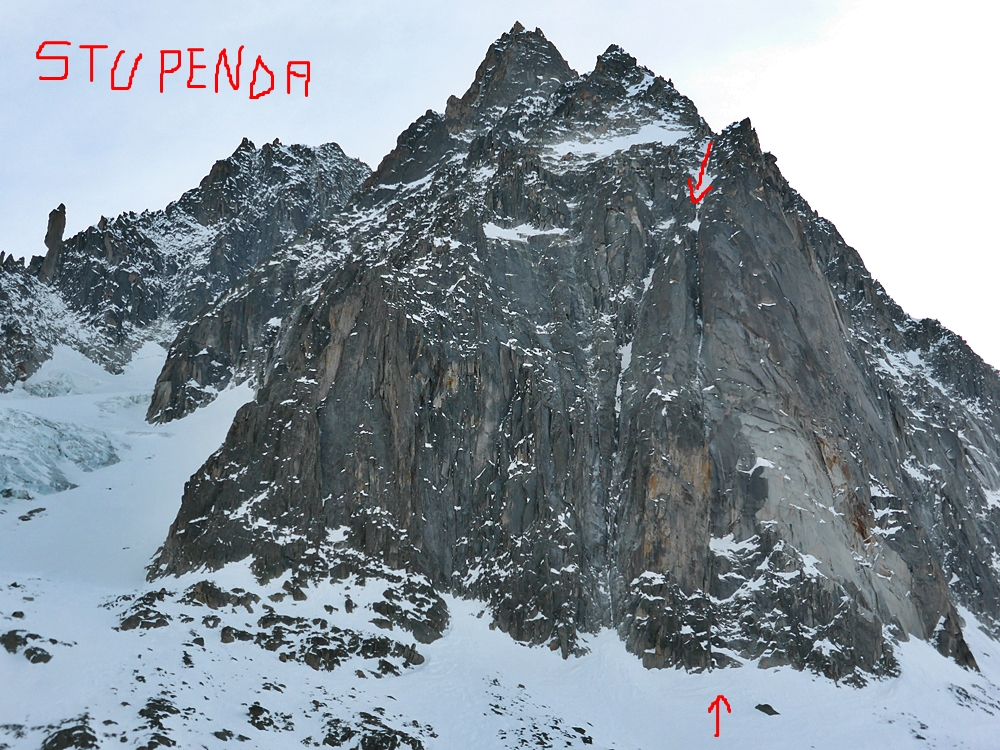
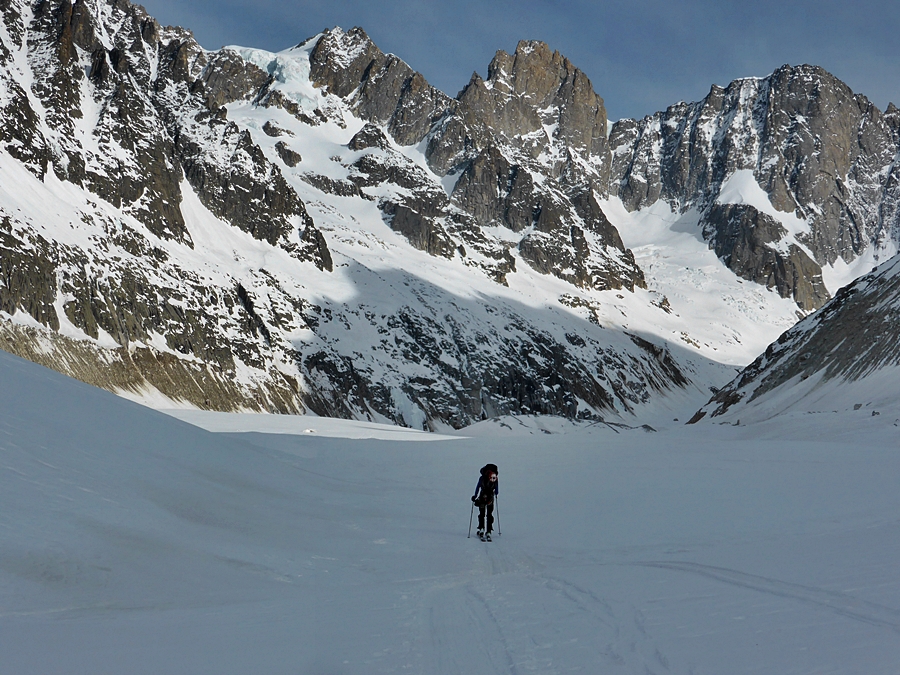


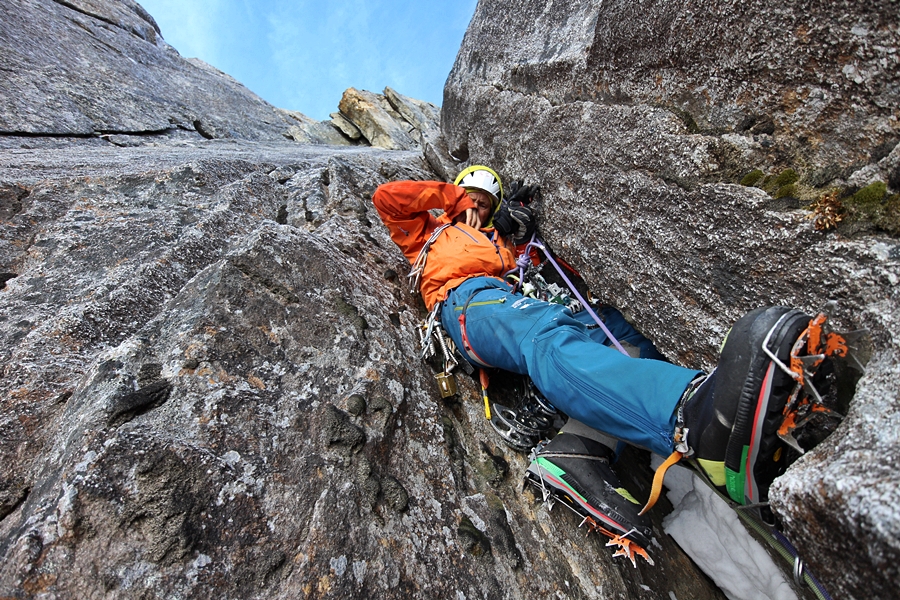
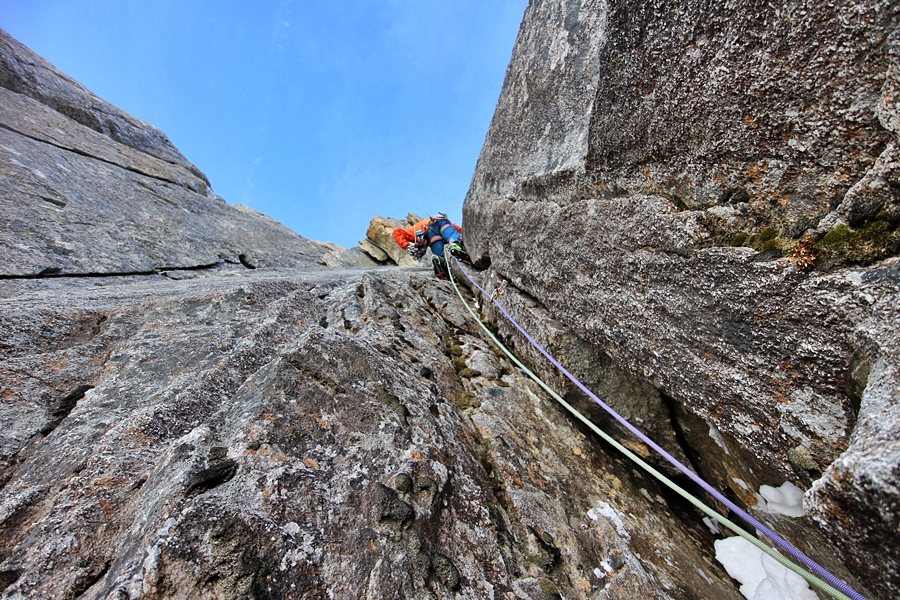

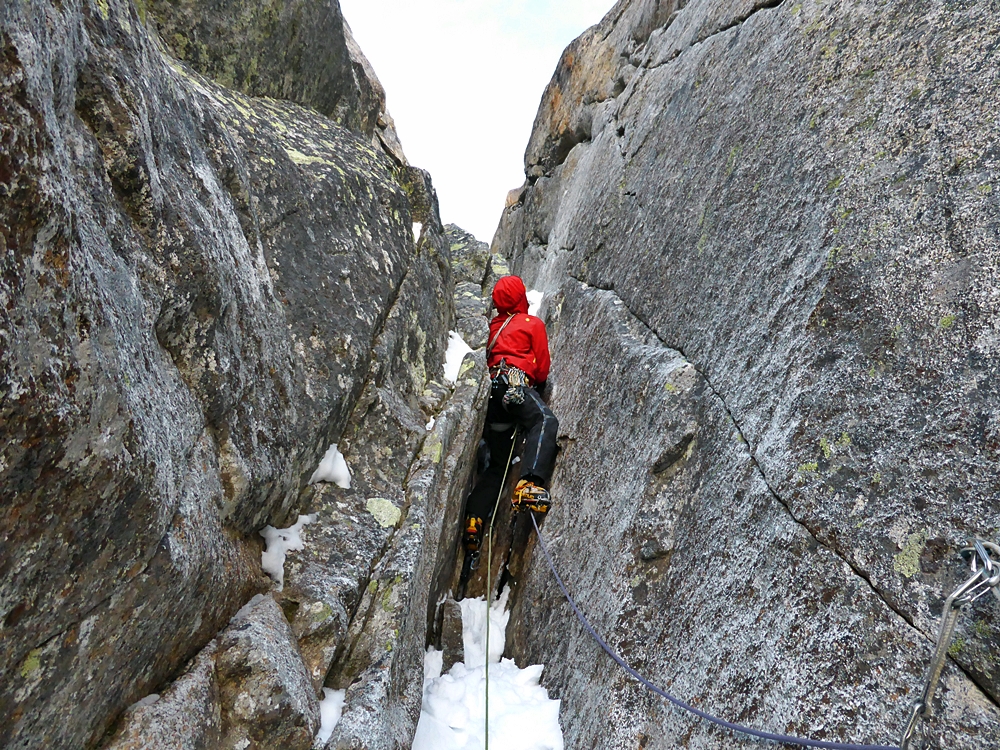
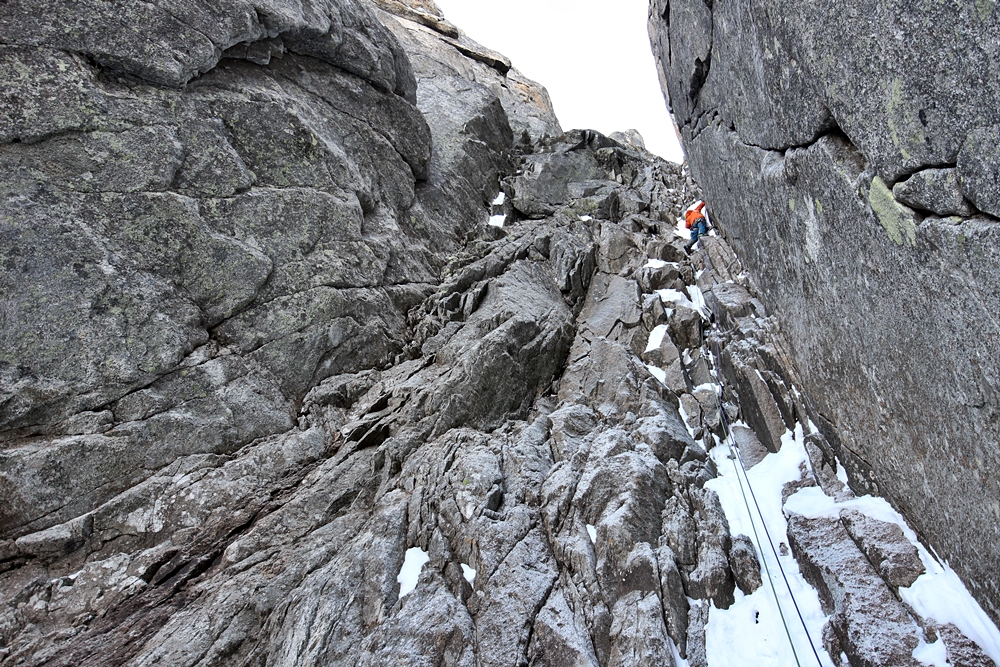
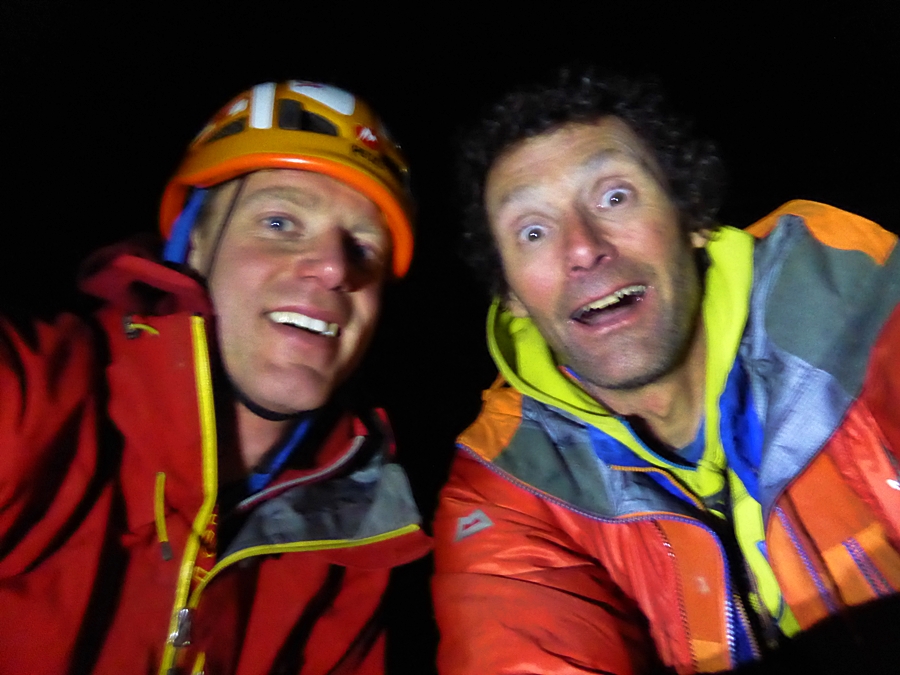








Jibbed? Graciously allowed you the pleasure of leading is how I thought it went…
Ah, yes, that’s how I saw it as well Jack!!!! 😉
Love this…
“Life can be a bit of a runaway I thought – one moment its the jitters and nervous anticipation and excitement, its the first swig of beer, fumbles in the dark, into the unknown and then, its routine, run-of-the-mill, the usual, casual, comfortable.”